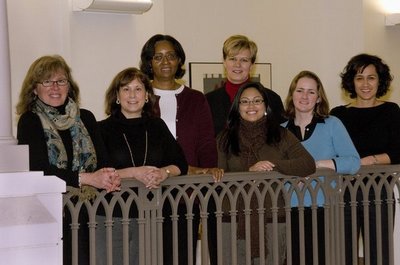January 21, 2010
Beyond ‘book learning’ Center for Experiential Learning offers undergraduates educational experiences outside the classroom
Editor’s Note: Today University Week begins a four-part series describing the work of the Center for Experiential Learning. A part of Undergraduate Academic Affairs, the center includes seven programs that deal with student learning experiences beyond the classroom. This week we offer an introductory look at the center as a whole.
The University offers students many learning experiences, not all of them in the classroom. Internships, service learning and research with a faculty mentor are just some of the things students can do to add to the traditional “book learning.” And to make all those things more accessible, Undergraduate Academic Affairs has gathered them into the Center for Experiential Learning.
The center, which is located at 120 Mary Gates, includes the following units:
- The Carlson Leadership and Pubic Service Center, which facilitates service learning and community leadership.
- The Undergraduate Research Program, which helps pair students who want a research experience with faculty who want to include undergraduates in their research program.
- Jumpstart, which pairs UW students with low-income preschool children to build skills for school success.
- The Pipeline Project, which arranges for UW students to tutor and mentor K-12 students.
- Global Opportunities, which helps students who otherwise would not be able to afford it to study abroad (two additional global opportunities advisers are at International Programs and Exchanges and the Office of Minority Affairs and Diversity).
- The Office of Merit Scholarships, Fellowships and Awards, which helps qualified students prepare for competitive scholarship opportunities.
- The Mary Gates Endowment for Students, which helps finance students in research or leadership projects.
“When (former dean) George Bridges brought them together, each of the programs had a very small staff and a small budget,” said Janice DeCosmo, associate dean of undergraduate academic affairs, who oversees the center. “He wanted them to be housed together so that we could reinforce each other’s work and realize some economies of scale. I think that has really been borne out.”
At the time the units were brought together, Global Opportunities didn’t yet exist and some of the other programs were just getting started, but all of them have since grown and become more popular with each passing year. Undergraduate research, DeCosmo said, is now practically mandatory for students in the sciences who want to go to graduate school and is becoming more common in the social sciences and humanities.
As for public service internships, DeCosmo said the University has always helped interested students to find them, but this year demand has been higher. The Students in Service Program, which is funded through Americorps, for example, offers students money for education if they commit to an internship in a nonprofit or in government.
“We’ve had a little over 100 slots allotted to us,” DeCosmo said. “In the past, we’ve really had to go out and do a lot of PR to get those slots filled. But this year they were filled halfway through fall quarter.”
Similarly, Jumpstart had 90 members by the end of October, which is the earliest those positions have been filled, DeCosmo said.
DeCosmo and the staff who direct the various components of the center are happy with the trend, not just because they believe in what they’re doing but because its effectiveness has been demonstrated in research. A study on “high impact” educational practices that was sponsored by the Association of American Colleges and Universities came up with a list of 10 such practices:
- Undergraduate research
- Diversity/global learning
- Service learning, community-based learning
- Internships
- First-year seminars and experiences
- Learning communities
- Writing-intensive courses
- Collaborative assignments and projects
- Capstone courses and projects
- Common intellectual experiences
“What they identify as high impact practices are largely what we do in the center,” DeCosmo said. “We assist thousands of undergraduates each year to find opportunities that complement their degree programs and offer scholarships that enable students to get involved. What’s really great about that is that these practices also seem to be even more important for underrepresented groups than for students in general. It’s one of the things that helps to level the playing field.”
The fact that all the units are working together and housed in the same place makes it easy for students to find out about and use more than one of them, DeCosmo said. A student might come in to the Office of Merit Scholarships, Fellowships and Awards, for example, to ask about applying for a prestigious fellowship and be told he needs more research experience to be competitive. He can then go right next door to the Undergraduate Research Program and find out how to do that.
The programs within the center often work together on projects, and they offer workshops for faculty on subjects such as how to incorporate service learning in their classes. There’s also a fair amount of personal collaboration — helping a faculty member write a research grant that includes students, for example.
DeCosmo said the center also works to support college, school or department-based experiential learning, and works closely with the Office of Minority Affairs and Diversity and Student Life.
For DeCosmo, the reward has been in watching the students. “When you see the kind of growth that we see in the students we work with, it’s phenomenal,” she said. “Just seeing them progress from when they first come in here to when they graduate — they have benefited so much. They’ve become independent, creative, confident people. It’s really inspirational.”

